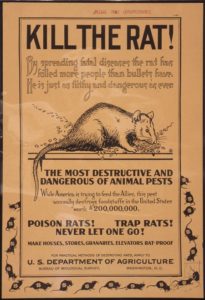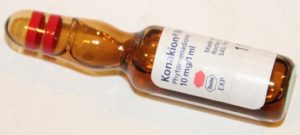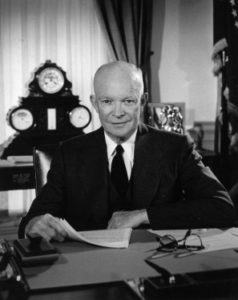 Like the plot of a movie…
Like the plot of a movie…
Warfarin has been used as a medication for more than 60 years. The discovery of Warfarin is interesting and sounds a bit like the plot of a movie; it includes a president, dead cattle, an attempted suicide and rat poison. Like many scientific discoveries of the last century it involved some serendipity, good fortune, the correct circumstances and the determination of a few individuals.
- Part 1 of the history of warfarin was about the discovery of Haemorrhagic Cattle Disease due to spoiled sweet clover,
- Part 2 about a desperate farmer and a churn of blood-that-would-not-clot
- Part 3 about the discovery and use of dicoumarol
- Part 4 about rat poison
and today - Part 5 about the introduction of warfarin into clinical practice
Doctors were not keen to use rat poison on their patients
 Between 1948 and 1950 a number of compounds similar to Dicoumarol were developed by other companies. These had slightly better anticoagulant effects or a faster onset of action but were not dramatically better than the original Dicoumarol and nowhere near as active as warfarin. In 1950 Link reviewed his data on warfarin and suggested to his colleagues that warfarin should be used in humans. When Link originally presented Dicoumarol to doctors they were enthusiastic as they had never had a drug like this before, but the reception when he presented them with warfarin was far less positive. Most doctors were not keen to use rat poison on their patients! He made very little progress with the drug until a potentially tragic event occurred.
Between 1948 and 1950 a number of compounds similar to Dicoumarol were developed by other companies. These had slightly better anticoagulant effects or a faster onset of action but were not dramatically better than the original Dicoumarol and nowhere near as active as warfarin. In 1950 Link reviewed his data on warfarin and suggested to his colleagues that warfarin should be used in humans. When Link originally presented Dicoumarol to doctors they were enthusiastic as they had never had a drug like this before, but the reception when he presented them with warfarin was far less positive. Most doctors were not keen to use rat poison on their patients! He made very little progress with the drug until a potentially tragic event occurred.
Even very high doses of warfarin were not fatal

On April 5th 1951 a young American Naval officer, Captain J Love, was admitted to the Naval Hospital in Philadelphia. Over the course of 5 days he had consumed a whole package of rat poison in the form of warfarin treated corn starch; it contained 567mg of warfarin. He had followed the package instructions and taken it repeatedly as recommended for rat extermination. After a few days he realised it was not an efficient agent for suicide, it gave him too long to think so he took himself off to hospital with a severe case of “Haemorrhagic sweet clover disease”. He was treated with vitamin K and made an uneventful recovery. This case acted as a catalyst and doctors realised that warfarin was safe in humans and even very high doses were not fatal.
Over the next few years Endo Laboratories in Richmond Hill, New York, took on the mass production of warfarin and it gradually became accepted in clinical practice as the anticoagulant of choice, however use increased rapidly after the president became a recipient of warfarin.
 President Eisenhower was started on warfarin
President Eisenhower was started on warfarin
In 1955 President Dwight Eisenhower was on holiday at his in-laws house in Denver when he suffered a heart attack. On the day he became unwell he had a lunch of burgers with raw onions and soon after developed “indigestion”, which he blamed on the onions. The discomfort got worse and he was taken by car to Fitzsimmons Veterans Hospital where he had an ECG and a heart attack was diagnosed. He broke from protocol and released detailed information about his illness including the information that he wore red pyjamas with 5 gold stars on the collar. At the time there was no constitutional process for the Vice President, then Richard Nixon, to take over, however Nixon took on the role as “acting” President. Eisenhower was initially treated with heparin and then started on warfarin at a dose of 35mg/week.
Since then warfarin has been taken by many famous people, it has even been implicated in the attempted murder of Joseph Stalin, but that’s another story.

Leave a Reply